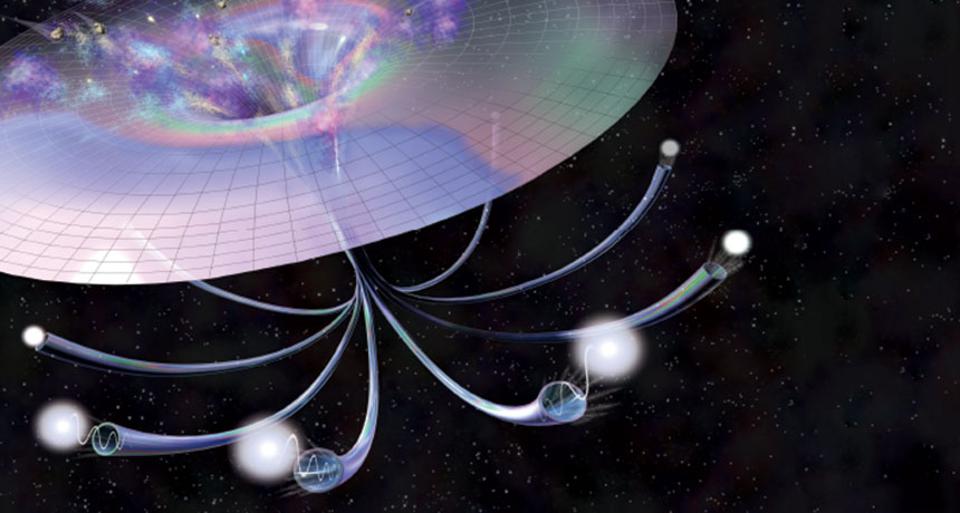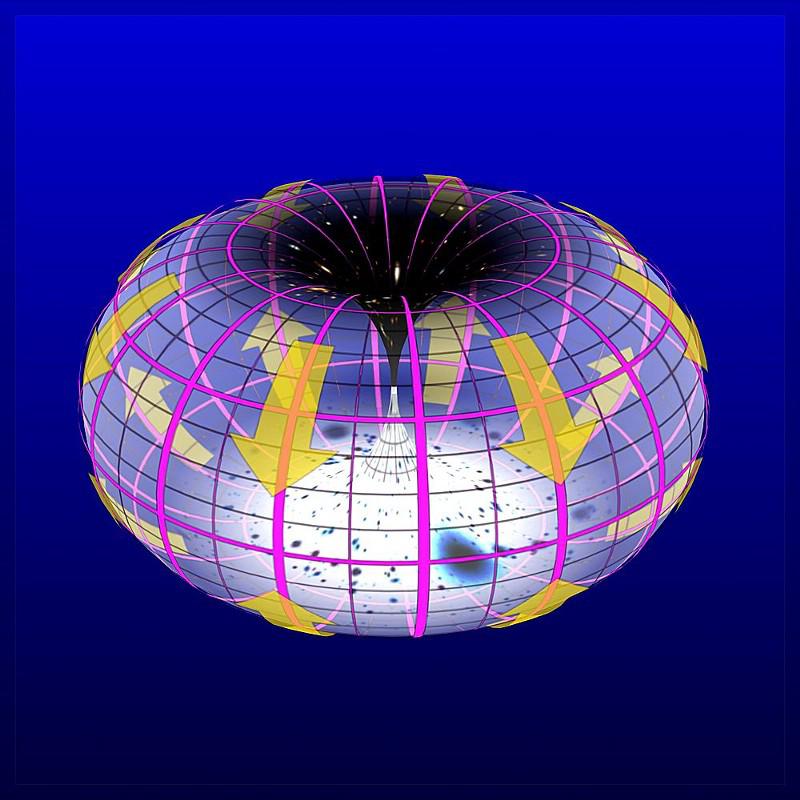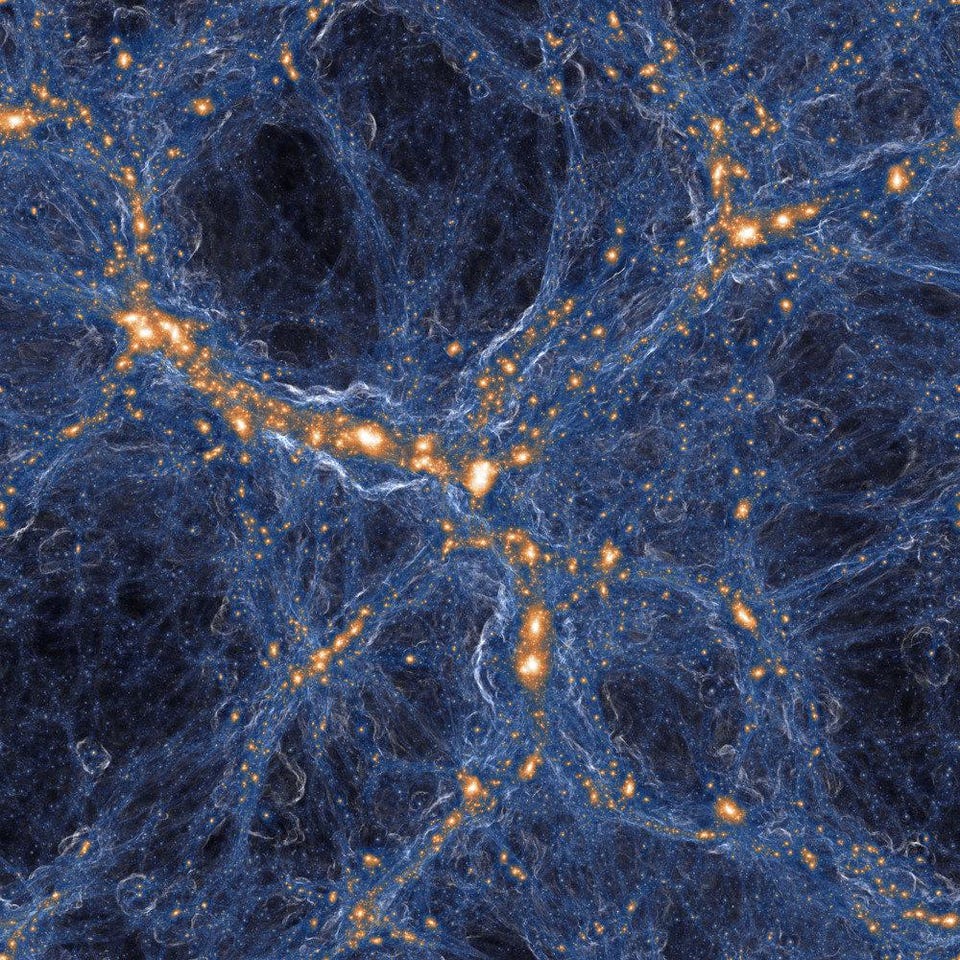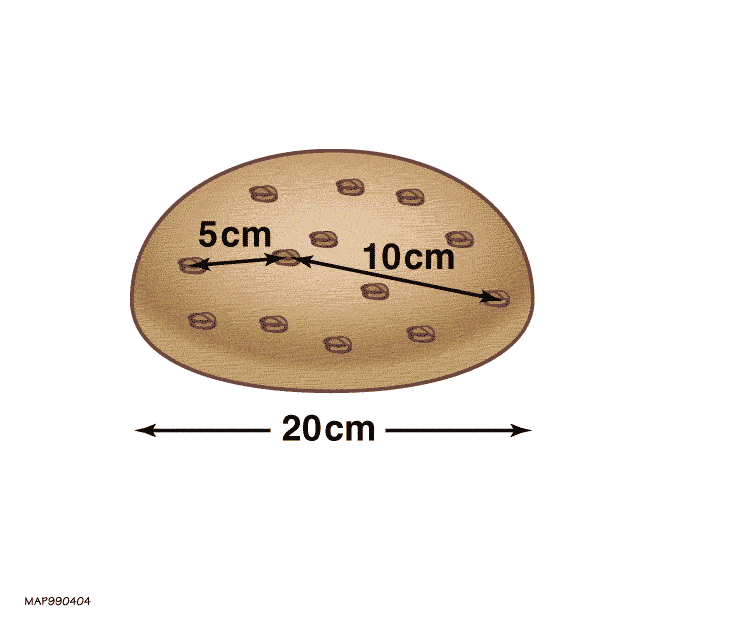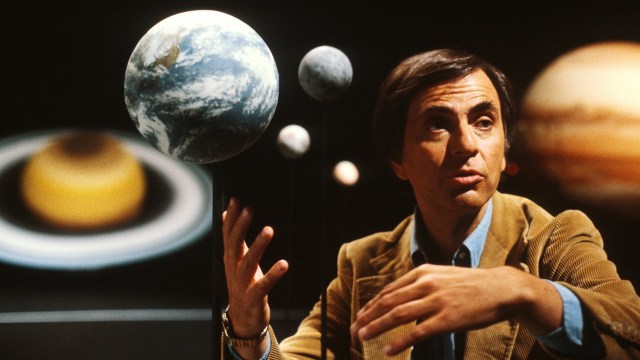Ask Ethan: How can we comprehend the size of the Universe?
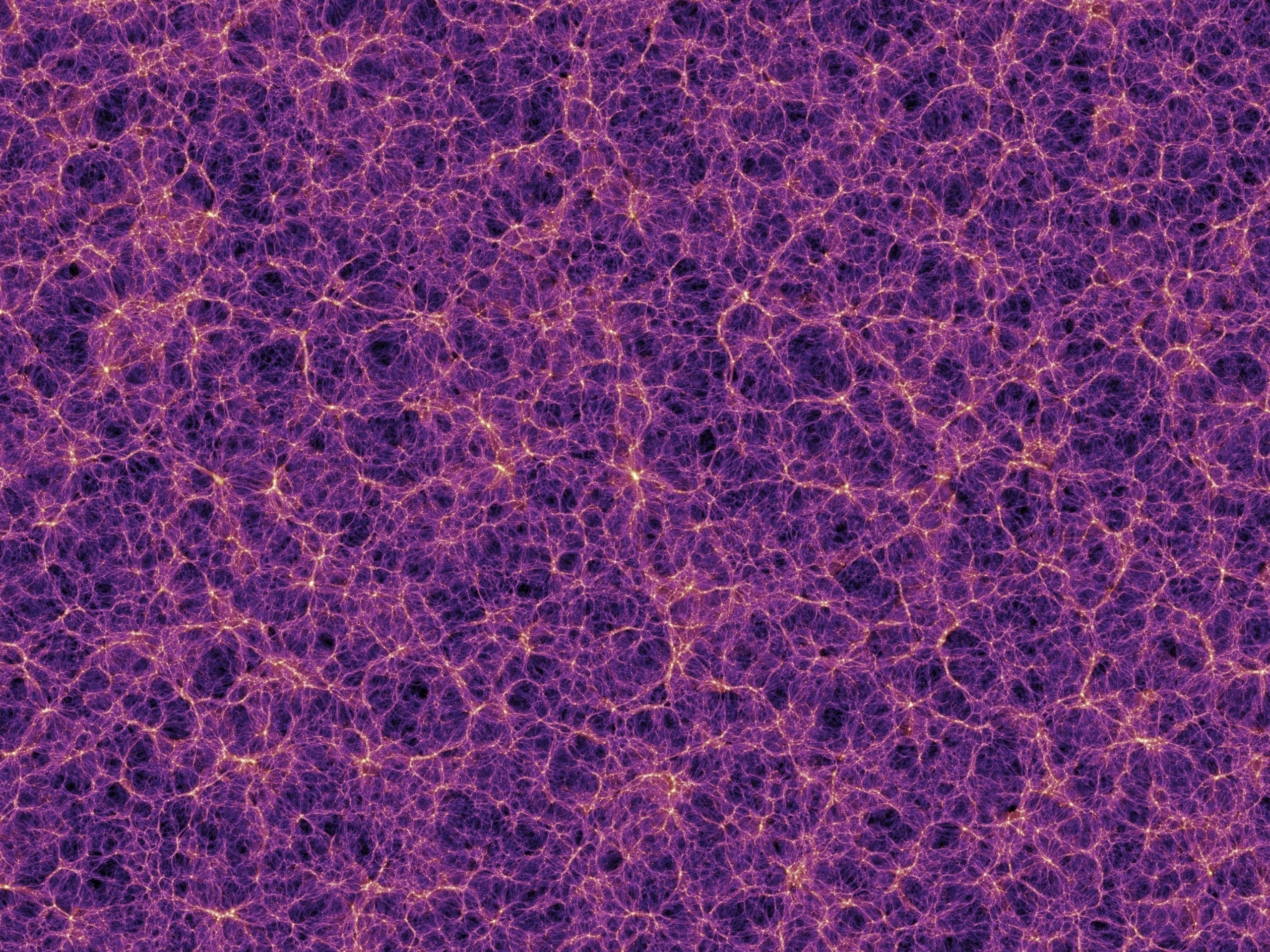
- Here on Earth, human beings typically experience scales as small as a millimeter or as large as a few kilometers in our everyday life.
- But the Universe itself, even restricted to the observable part, goes on for much greater scales: spanning 92 billion light-years across.
- It might seem like an impossible task to comprehend such scales, but we owe it to ourselves to make the most sense of it that we can with our limited experiences.
Here on Earth, human beings exist on the scale of meters, with the average human being a little less than two meters in height. Our typical experiences might take us three or four orders of magnitude away from that scale: down to millimeter scales or a little bit smaller, and up to scales of several kilometers. Beyond that, however, we have to stop thinking of the world in scales that we experience and get very abstract; it’s simply beyond what we’re familiar with on a day-to-day basis, and beyond what our senses are capable of perceiving and making sense of.
But what about the entire Universe? Is there any way, given our limitations as humans, to make sense of such impressive scales? That’s what Scott Brenner wants to know, writing in to ask:
“Trying to truly comprehend how large the universe really is seems like an ant trying to understand how far, say, New York is from California. Perhaps you could suggest some ways to wrap our heads around that.”
I think this is a very good and even a very important question, because when something feels incomprehensible, it makes it more inaccessible. And since the Universe makes us up and we exist as part of the Universe, we should absolutely feel at home within it. Here’s how I think you can help make sense of it.

To many of us, no doubt, it can feel overwhelming to go straight to such magnificently large scales that span tens of billions of light-years. Think about how inaccessibly hard it is to comprehend the smallness of the microscopic, molecular, and subatomic worlds that our components inhabit at progressively smaller and smaller levels, after all. If you were to examine your body under a microscope, you’d discover that you were largely composed of cells: biological units that bind together and move through your various systems to perform an invaluable series of life processes; all told, there are some 80-100 trillion cells inside a typical adult human body.
And yet, cells themselves — normally just tens to hundreds of microns in size — are themselves composed of smaller constituents: organelles, cytoplasm, along with various proteins, nucleic acids, and other simple and complex molecules. Molecules themselves are made out of atoms just 100 picometers across, while atoms are composed of point-like electrons that orbit nuclei that are only ~1 femtometer wide. Nuclei are made of protons and neutrons; each of those are made of point-like quarks and gluons, and while we know that electrons, quarks, and gluons are no bigger than about 10-19 meters, they could truly go all the way down to infinitesimally small scales.

There are many true, interesting, but difficult-to-comprehend facts that we could state about our constituent parts. For example:
- Most of a human body’s mass is made of just the ~4 trillion cells that compose our musculoskeletal system, connective tissues, and internal organs. Another ~40 trillion cells are simply blood cells flowing through our body, and about ~50 trillion are bacterial cells — not even made by our own body — that live in our digestive tracts.
- There are nearly 1028 atoms in a human body, all told, and close to 1029 subatomic particles that make each of us up. These numbers are huge: about 10-100 million times the total number of stars in the Universe.
- And if you decided to fill the volume of an adult human being up entirely with, say, neutrons, you’d be able to fit more than 1043 neutrons inside, with a total mass of around 20 trillion tonnes.
We have very little that helps us understand numbers or scales that are so incredibly different from the ones we’re familiar with. But to a quark, a proton is understandable. To a proton or neutron, an atom takes up accessible scales. To an atom, a molecule is only a little bit larger. To a molecule, organelles aren’t so bad. To an organelle, a cell is a reasonable amount larger. To a cell, a bone or organ is within reach. And the human body is quite accessibly made up of those. To understand the scale Universe, we just have to build up a little bit at a time.

One of the most convenient ways to begin is to go from the scale of a human to the scale of planet Earth. Although Earth is pretty big compared to a human, building up a little at a time doesn’t seem so bad. Human beings are capable of climbing mountains, and mountains can easily rise up several kilometers in elevation over sea level. If you rise up in a hot air balloon or an airplane, you can achieve heights of tens of kilometers. Aboard a space ship, you can escape to above Earth’s atmosphere, achieving altitudes of hundreds of kilometers, comparable to what one would see from the International Space Station.
And as you move farther and farther from Earth, you get to see what it’s truly all about. It’s a spinning, nearly spherical ball about 13,000 kilometers in diameter. From only tens of kilometers up, you can start to see its curvature, and once you’re a few thousand kilometers away, you can take the full planet in one hemisphere at a time. Earth is extremely large compared to the scale of a human, but humans have ventured far enough away from planet Earth to obtain precisely this view, feeling a phenomenon known as the Overview Effect: the reason William Shatner cried when he went to space back in 2021.
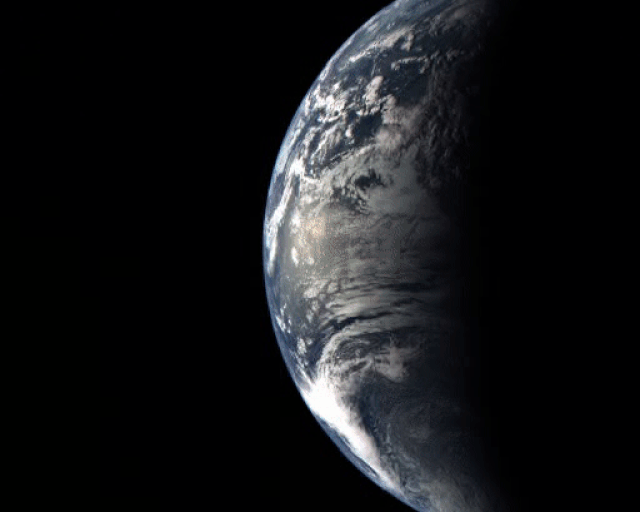
The Earth, however, is on the small side compared to many of the other bodies in our Solar System. Uranus and Neptune are each about four times the diameter of Earth, while Jupiter and Saturn are more like 10-11 times our planet’s diameter. The Sun — the largest object in our Solar System — is a staggering 1.4 million kilometers in diameter: some 109 times the diameter of Earth and capable of fitting more than one million Earths inside of it.
But the individual objects are easy to comprehend if you’re already the size of the Earth. And from the perspective of the Earth, it makes sense not only to look at the objects themselves, but the scales at which these objects move around one another: on the scales of planetary orbits.
The Earth’s is the one we’re most familiar with: with a mean distance from the Sun of 150 million kilometers (or 93 million miles). But this distance, the Earth-Sun distance, is only a little more than 100 times the size of the Sun itself, which is only a little more than 100 times the size of the Earth itself. All of a sudden, by just going up a little bit: from on Earth to above Earth’s atmosphere and by looking at the other objects in our Solar System, we’ve gone from the scale of a ~1.5-2 meter human to a ~150 billion meter orbit around our Sun.
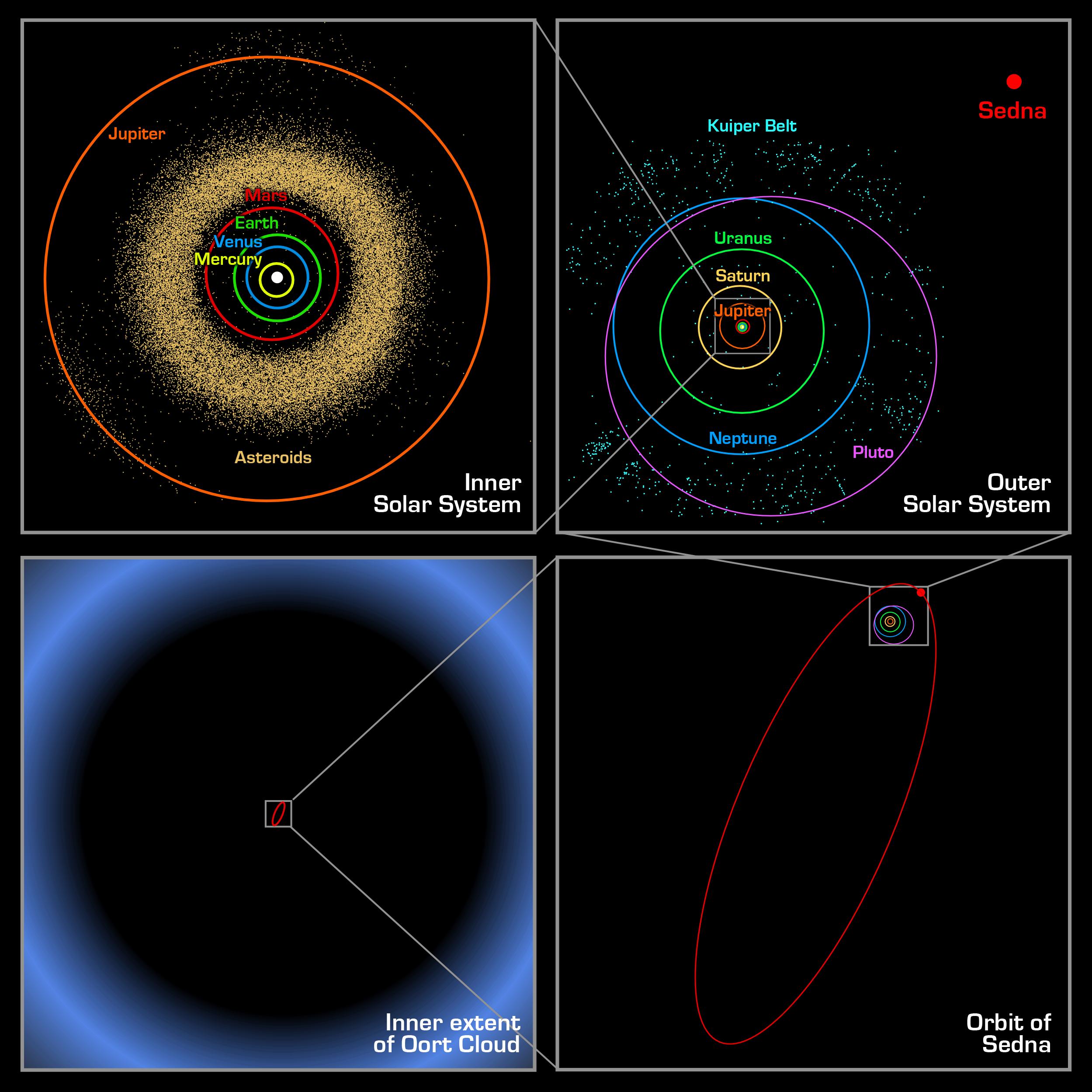
Of course, our Sun is just one of a great many stars in the Milky Way, so the next step up is from the scale of things in our Solar System (like Earth’s orbit) to the nearest stars. This is a huge jump, but one that we can comprehend if we now begin our starting point where our last endpoint left off: at the scale of Earth’s orbit.
Other planets, of course, are farther away from the Sun than Earth is. Jupiter’s orbit is about 5 times the diameter of Earth’s; Saturn’s is 10 times as large; Uranus’s is 20 times as great; Neptune’s is 30 times as great. The Kuiper belt extends out to about double the extent of Neptune’s orbit, and while there are a smattering of other objects beyond that, you have to go out to around 1000 times Earth’s orbit before you reach the innermost portions of the Oort cloud.
But the Oort cloud goes out for tens of thousands of times the Earth-Sun distance: perhaps out to even more than a full light-year. And then, once you start reaching distances of a few light-years, you finally reach it: the next nearest star to Earth, Proxima Centauri, located 4.2 light-years away.
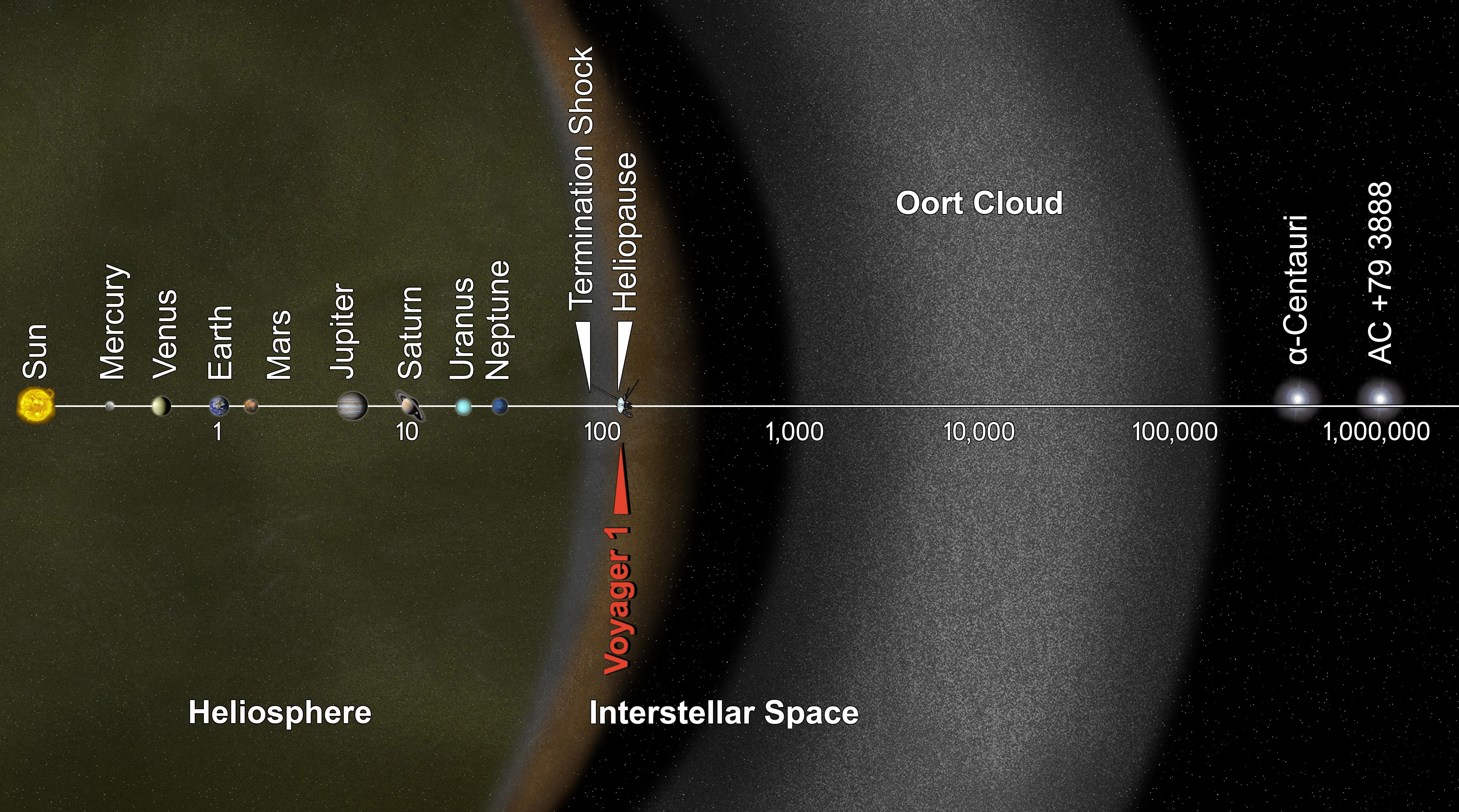
Stars are separated by distances that are usually measured in light-years, and they add up fast. There are hundreds of stars within 25 light-years of us, and that number rises up to more than 10,000 stars if you draw a sphere just 100 light-years around Earth. At this scale, you start to notice that there are directions in space where there are more stars and other directions have fewer: you’re starting to see the structure of the Milky Way. In the direction of the galactic center, as well as throughout the plane of the Milky Way and particularly along its spiral arms, stars are denser and more numerous; away from them, less so.
All told, a galaxy is a collection of an enormous number of stars, but not an incomprehensibly large one. The Milky Way is a little over 100,000 light-years in diameter, which is to say that if a ~1.5-2 meter human being lives on a 13,000 kilometer-wide Earth, then that’s the same ratio as the distance to the inner Oort cloud to the size of the Milky Way.
Humans-to-Earth is the same as the size of Earth to the distance to the inner Oort cloud is the same as the distance to the inner Oort cloud is to the size of the Milky Way. And things, believe it or not, get easier from there.
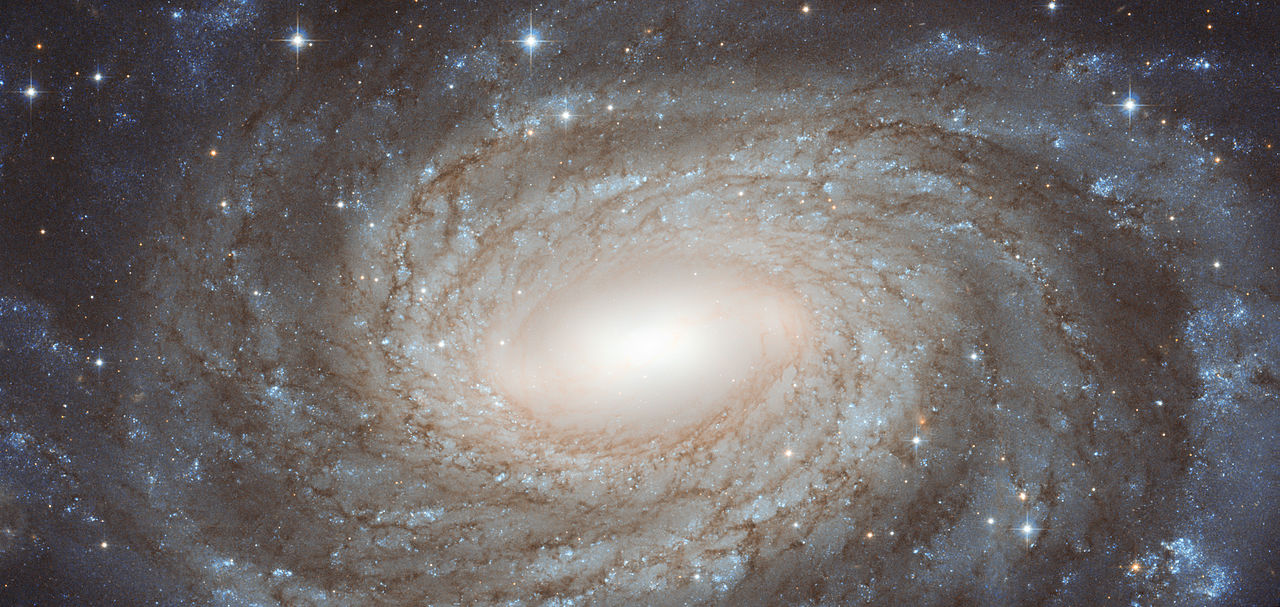
Stars are tiny compared to the distances between them. If the Sun were a grapefruit in Seattle, WA, then the next nearest star would be a grapefruit in New York.
But galaxies are not tiny compared to the distances between them. If the Milky Way were a grapefruit in Seattle, WA, then Andromeda — the Local Group’s largest galaxy located 2.5 million light-years away — would be a grapefruit in the same room, only about 10 feet (3 meters) away. In fact, the Virgo Supercluster, spanning perhaps one hundred million light-years, contains thousands upon thousands of large galaxies, and that would be like having thousands of grapefruits clustered and clumped together in groups over the span of about a single city block.
In fact, the large-scale structure of the Universe is kind of like that: there are hundreds of billions of grapefruits — and tens of trillions of, say, oranges, mandarins, and kumquats that are smaller versions of galaxies — distributed across just under 500 such “city blocks” in all directions in all three dimensions, with ours, containing the Virgo Cluster, located at the center. If 100 million light-years is well within our Local Supercluster, then it’s only some 460 times that distance to the edge of the observable Universe.

From the scale of a human to the scale of the observable Universe seems incredibly daunting. Humans are a couple of meters in scale; the Universe that we can see extends for some 46 billion light-years in all directions. That means the observable Universe — in terms of diameter — is nearly a full 27 orders of magnitude, or a factor of one octillion (1,000,000,000,000,000,000,000,000,000) larger than a human being. It’s easy to see why that’s so wildly incomprehensible.
But that’s why we use two tricks at once:
- We don’t go straight in one magnificent leap from one accessible scale to the largest or smallest scales, but rather we go in as many reasonable steps as it takes so that no two “steps” are too far apart.
- And we don’t necessarily look at everything on the same objective scale, but rather we change our perspective with each successive step.
One of the more intuitive ways to take both of these steps, together, is instead of thinking in conventional distances, to think of distances from a logarithmic point of view. In fact, a logarithmic map of the Universe, like the one shown below, can truly capture the grandeur of the Universe on a variety of scales all at once.

The way to conceive of scales as big as the Universe is not from the perspective of a human, but rather from the perspective of something more relevant to the Universe itself. The Universe is big, but it’s only a few hundred thousand times as big as the Milky Way galaxy. The Milky Way galaxy is big, but it’s only a few tens of thousands of times as big as the distance between any two typical stars. The distance between any two stars is pretty big, but it’s only a few hundred thousand times as big as the Earth-Sun distance. And the Earth-Sun distance is only ~10,000 times as big as the Earth, which is, at last, accessibly-sized to human beings.
If you insist on taking the leap from ourselves up to the size of the observable Universe, it’s easy to feel insignificant. But we are a part of many significant things that fit better on larger scales; we can view ourselves as creatures of Earth, members of the Solar System, a component of the Milky Way, and inhabitants of this Universe. This isn’t an inconceivably large place; rather, it’s the full extent of our home as best as we know it, and the nearby and distant objects beyond our own planet are our cosmic neighbors and relatives. Although they might seem inconceivably far away, from the perspective of the Universe, anything we can see is really just cosmically right next door.
Send in your Ask Ethan questions to startswithabang at gmail dot com!
